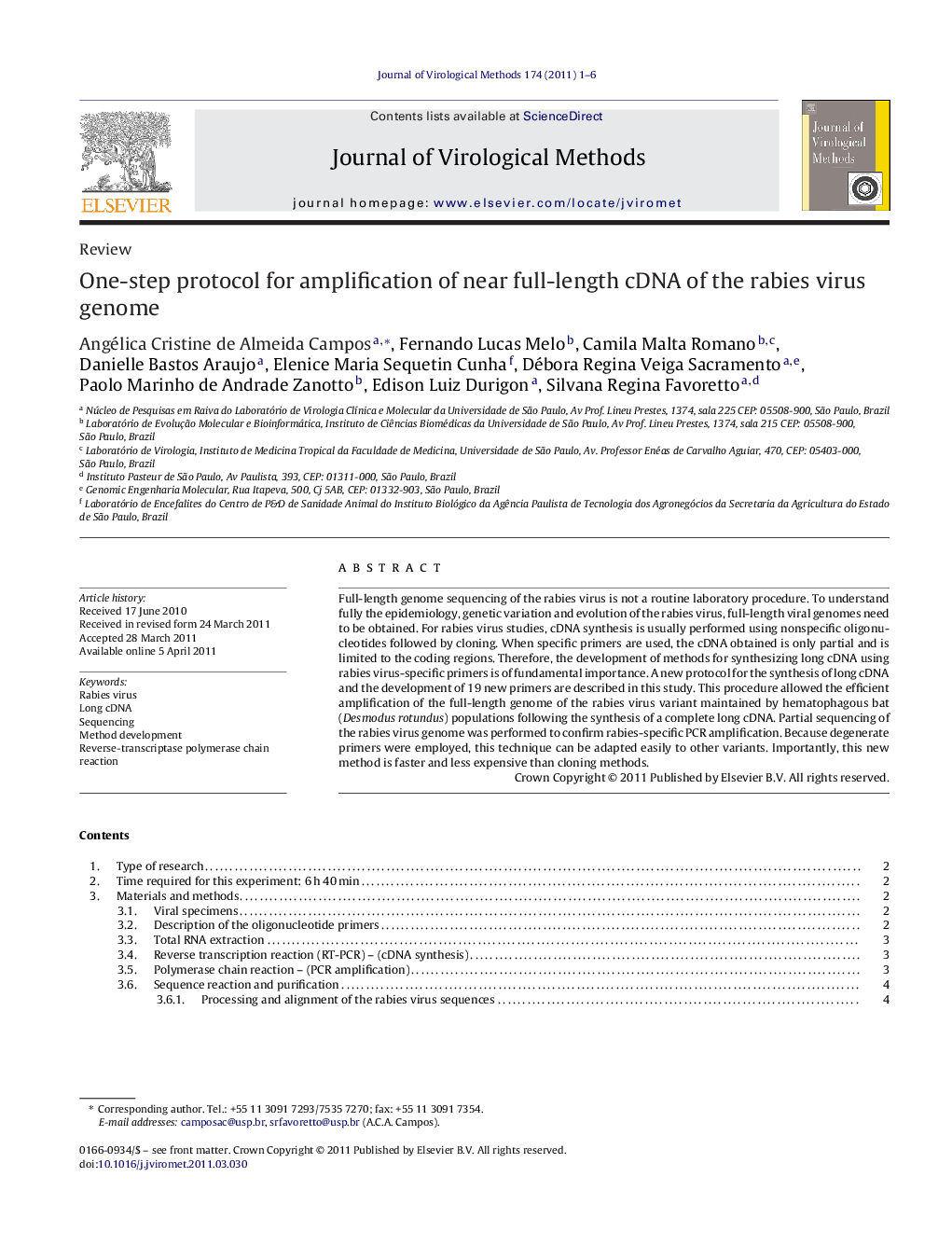| Article ID | Journal | Published Year | Pages | File Type |
|---|---|---|---|---|
| 6135295 | Journal of Virological Methods | 2011 | 6 Pages |
Full-length genome sequencing of the rabies virus is not a routine laboratory procedure. To understand fully the epidemiology, genetic variation and evolution of the rabies virus, full-length viral genomes need to be obtained. For rabies virus studies, cDNA synthesis is usually performed using nonspecific oligonucleotides followed by cloning. When specific primers are used, the cDNA obtained is only partial and is limited to the coding regions. Therefore, the development of methods for synthesizing long cDNA using rabies virus-specific primers is of fundamental importance. A new protocol for the synthesis of long cDNA and the development of 19 new primers are described in this study. This procedure allowed the efficient amplification of the full-length genome of the rabies virus variant maintained by hematophagous bat (Desmodus rotundus) populations following the synthesis of a complete long cDNA. Partial sequencing of the rabies virus genome was performed to confirm rabies-specific PCR amplification. Because degenerate primers were employed, this technique can be adapted easily to other variants. Importantly, this new method is faster and less expensive than cloning methods.
⺠Full-length genome of the rabies virus is not a routine laboratory procedure. ⺠A new protocol for the synthesis of long cDNA and the development of 19 new primers. ⺠The efficient synthesis of a complete long cDNA was performed. ⺠This technique can be adapted easily to other variants. ⺠This new method is faster and less expensive than cloning methods.
